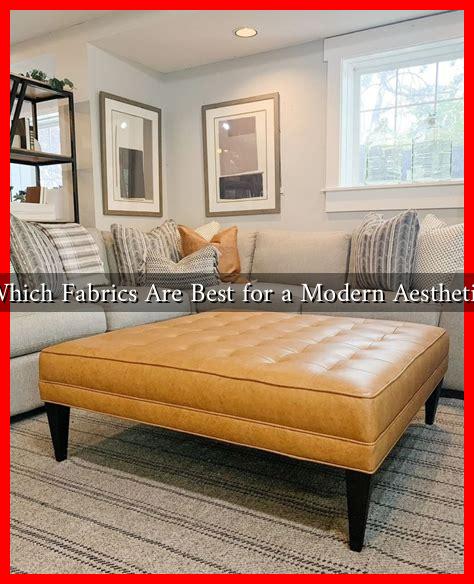-
Table of Contents
Which Fabrics Are Best for a Modern Aesthetic?
In the world of interior design and fashion, the choice of fabric plays a crucial role in achieving a modern aesthetic. The right fabric can enhance the overall look of a space or outfit, contributing to a clean, sophisticated, and contemporary vibe. This article explores the best fabrics that align with modern design principles, offering insights into their characteristics, uses, and benefits.
Understanding Modern Aesthetics
Modern aesthetics are characterized by simplicity, minimalism, and functionality. The design often emphasizes clean lines, neutral colors, and a lack of ornamentation. Fabrics that complement this style typically share these qualities, providing a seamless integration into modern spaces. Key characteristics of modern fabrics include:
- Simplicity in design
- Neutral or muted color palettes
- Textural variety without excessive embellishment
- Durability and ease of maintenance
Top Fabrics for a Modern Aesthetic
Here are some of the best fabrics that embody the principles of modern design:
Linen
Linen is a timeless fabric known for its natural texture and breathability. It offers a relaxed yet sophisticated look, making it ideal for both upholstery and drapery. Linen’s ability to soften over time adds to its appeal, creating a lived-in feel that aligns with modern aesthetics.
- Durability: Linen is one of the strongest natural fibers, making it long-lasting.
- Eco-friendly: It is biodegradable and requires less water to produce compared to cotton.
Cotton
Cotton is versatile and widely used in modern design. Its smooth texture and ability to hold color well make it a popular choice for upholstery, bedding, and curtains. Cotton blends, such as cotton-linen or cotton-polyester, can enhance durability while maintaining a modern look.
- Easy to clean: Cotton fabrics are often machine washable, making them practical for everyday use.
- Variety: Available in countless patterns and colors, cotton can fit any modern aesthetic.
Wool
Wool is a luxurious fabric that adds warmth and texture to modern spaces. It is particularly effective in creating cozy environments without sacrificing style. Wool can be used in rugs, throws, and upholstery, providing both comfort and sophistication.
- Insulation: Wool is naturally insulating, making it ideal for colder climates.
- Fire-resistant: Wool is naturally flame-retardant, adding an element of safety.
Microfiber
Microfiber is a synthetic fabric that has gained popularity in modern design due to its sleek appearance and practicality. It is often used in furniture upholstery and accessories, offering a contemporary look with easy maintenance.
- Stain-resistant: Microfiber is known for its resistance to spills and stains, making it ideal for high-traffic areas.
- Softness: It mimics the feel of suede or leather, providing a luxurious touch.
Velvet
While traditionally associated with opulence, velvet has found its place in modern design through its rich texture and depth. When used in muted colors, velvet can add a touch of elegance without overwhelming a space.
- Visual interest: The play of light on velvet creates a dynamic look.
- Comfort: Velvet is soft to the touch, enhancing the tactile experience of a room.
Case Studies and Examples
Many contemporary designers have embraced these fabrics in their projects. For instance, the renowned interior designer Kelly Wearstler often incorporates linen and velvet in her modern spaces, creating a balance between comfort and sophistication. Similarly, fashion brands like Everlane utilize cotton and microfiber in their collections, emphasizing sustainability and modern aesthetics.
Conclusion
Choosing the right fabric is essential for achieving a modern aesthetic in both interior design and fashion. Fabrics like linen, cotton, wool, microfiber, and velvet not only embody the principles of modern design but also offer practical benefits. By understanding the characteristics and uses of these fabrics, you can create spaces and outfits that are not only stylish but also functional and enduring. As you embark on your design journey, consider how these fabrics can enhance your modern aesthetic and contribute to a cohesive look.
For more insights on modern design trends, visit Architectural Digest.


